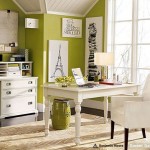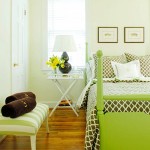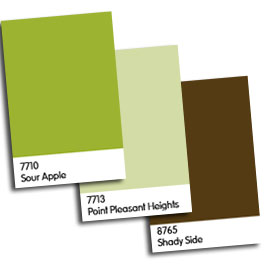 Every now and then I hit upon something that I know is a good idea. And, though this doesn’t happen very often, this is one of those times. There’s no way around it: decorating your kids’ rooms with their help is a great opportunity for you and for them. Oh, I know there are lots of little bugs in the idea and potential complications–but that doesn’t change the fact that it’s a good thing to do.
Every now and then I hit upon something that I know is a good idea. And, though this doesn’t happen very often, this is one of those times. There’s no way around it: decorating your kids’ rooms with their help is a great opportunity for you and for them. Oh, I know there are lots of little bugs in the idea and potential complications–but that doesn’t change the fact that it’s a good thing to do.
Taking a room that was decorated with younger kids in mind and turning it into “hip, way cool pad” is a great way to let your kids know that YOU know that they’re growing up. Taking down the wallpaper borders of stuffed bears and turtles and replacing it with something more age-appropriate will make your kids feel important. And involving them in that process, seeking their input and listening to their suggestions will make them feel that they are on the path to growing up–they’re actually an active force in the creation of their new room.
Surprise Makeovers are Cool on TV, But Not So Much In Real Life
If you still need convincing that it’s a good idea to involve your kids in the process, then think about it this way: on TV, surprise makeovers are cool. They really are. But that’s because we don’t normally watch the recipient of the new room beyond their initial reaction. We see them when they first whip off a blindfold and stand blinking and squinting in the bright lights as they try to take in their new surroundings. Everybody’s happy and giggly and the show ends. We don’t see the couple standing there 12 hours later, now that the cameras and energetic TV personalities are gone, staring at the new walls and wondering what happened and how anybody ever thought that bright orange was a good look.
Your kids feel the same way about their room as you would about your home. Their room is their space–their world away from the world, especially as they get older. Just as you wouldn’t likely appreciate it if your husband or your neighbor just dropped by one afternoon and repainted your living room in colors of their choosing, neither will your kids necessarily be receptive to the changes you bring about one day while they’re off at school. Your vision for their room isn’t necessarily their vision for the room. You’ve got to make it your goal to discover a mutually acceptable vision.
Involve Them, But Remember Their Limitations
To that end, involve them in every aspect of the process. Take them to the store and let them look at colors. Let them flip through wallpaper books and mural books. Let them explore the world of Faux Painting. However, make sure that you keep the outings short and sweet–no marathon shopping trips that will frustrate and wear your kids out. Remember that their attention spans are not like yours–keeping the trips to a limited amount of time will make sure both of you enjoy the outings. And don’t forget to think bigger than just a trip to the paint store or the furniture store: try to tie your decorating trips in with a nice dinner out or something like that.
Taking the kids to the paint store and listening to their suggestions and then taking them out to dinner will be one of those special moments kids remember. If you treat their opinions as valid options and listen to their thoughts and take the time to discuss things with them over dinner, they will start to feel like an intricate part in the decision process. And trust me, I may have young kids and I may not have had much experience in the world of psychology, but I know this is a good thing. You don’t have to be a genius to see that by involving your kids in something so small as decorating their rooms, you’re basically telling them that their opinions matter and that you value their thoughts.
What If . . ?
Alright, now you’re probably thinking that I’m living in a world where everything is puppy dogs and lollipops. Sure it sounds good to involve the kids in the decorating process, but what’s going to happen when they pick out Sponge-Bob Yellow and Bright Red for their walls? We’ll cover that in the next post.









 By Guest Writer, Shannon VandenBosch
By Guest Writer, Shannon VandenBosch

 Pick up some simple shelves and splash them with a bright color and you’ll be amazed how much character they display. These simple, boring, run-of-the-mill shelves suddenly look like designer pieces when we see them in a pink or a bright yellow.
Pick up some simple shelves and splash them with a bright color and you’ll be amazed how much character they display. These simple, boring, run-of-the-mill shelves suddenly look like designer pieces when we see them in a pink or a bright yellow.
 There are few places in your home where you can really cut loose and have a good time with color as much as you can in a kids’ room. When it’s your bathroom or your living room or a dining room we all tend to be a little more cautious. We don’t want to go nuts and create something on the walls that will drive us crazy or overpower our other decorating.
There are few places in your home where you can really cut loose and have a good time with color as much as you can in a kids’ room. When it’s your bathroom or your living room or a dining room we all tend to be a little more cautious. We don’t want to go nuts and create something on the walls that will drive us crazy or overpower our other decorating.